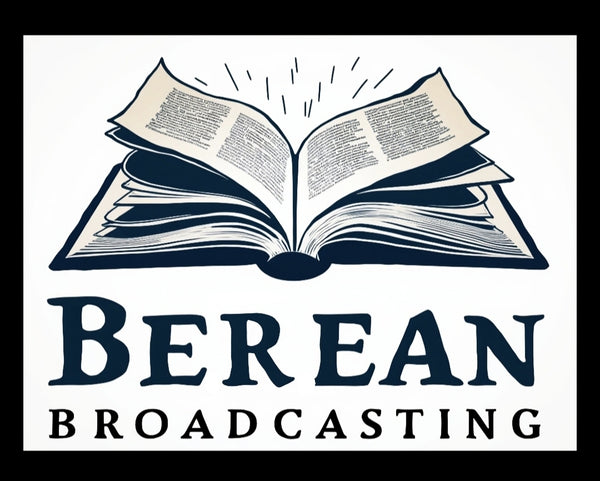Hebrews 8
Share
Hebrews 8, part of the epistle to the Hebrews, written around AD 60–68, likely before the Jerusalem temple’s destruction, emphasizes the superiority of Christ’s high priesthood and the new covenant He mediates. The author contrasts the old covenant’s earthly tabernacle and temporary promises with the new covenant’s heavenly sanctuary and eternal forgiveness, showing Christ’s ministry fulfills and surpasses the Mosaic law.
Key Sections
Christ’s Superior Ministry (8:1–6): The main point is that Christ, seated at God’s right hand in the true heavenly sanctuary, is high priest of a better covenant with better promises. Unlike earthly priests serving a copy and shadow of heavenly things, as Moses was instructed to build the tabernacle, Christ mediates a superior covenant enacted on divine promises.
New Covenant’s Necessity (8:7–9): The first covenant was not faultless, requiring a new one. God found fault with the people, as they didn’t continue in His covenant, leading Him to disregard them, per Jeremiah 31:31–34.
New Covenant’s Promises (8:10–12): God will establish a new covenant with Israel and Judah, writing His laws on minds and hearts, being their God, and ensuring all know Him, from least to greatest. He will forgive their sins, remembering them no more.
Old Covenant’s Obsolescence (8:13): By calling it a “new” covenant, God makes the first obsolete, ready to vanish, as its earthly system fades.
Cross-References
Christ’s Heavenly Priesthood:
Hebrews 4:14–16: Great high priest.
Psalm 110:1: Sit at right hand.
Revelation 3:21: Throne with God.
True Sanctuary:
Hebrews 9:11–12: Heavenly tabernacle.
Exodus 25:9: Tabernacle pattern.
Acts 7:44: Shadow of heavenly.
Better Covenant:
Hebrews 7:22: Better guarantee.
Galatians 3:19–25: Law’s limits.
2 Corinthians 3:6–11: Ministry of Spirit.
Jeremiah’s Prophecy:
Jeremiah 31:31–34: New covenant.
Ezekiel 36:26–27: New heart, Spirit.
Romans 11:27: Sins taken away.
Old Covenant’s End:
Hebrews 10:9: Abolishes first.
Romans 10:4: Christ, law’s end.
Matthew 5:17: Fulfill the law.
Forgiveness of Sins:
Colossians 1:14: Redemption, forgiveness.
Ephesians 1:7: Blood’s forgiveness.
Isaiah 43:25: Blot out sins.
Theological Meaning
Christ’s Exalted Role: Seated in heaven, He ministers in the true sanctuary, surpassing earthly priests (8:1–2; Hebrews 10:12).
New Covenant’s Superiority: It internalizes God’s law, ensures intimate knowledge of Him, and grants full forgiveness (8:10–12; Romans 8:1).
Old Covenant’s Limits: Its external rituals and human failure necessitated replacement (8:7; Galatians 4:9).
Heavenly Reality: The tabernacle was a shadow, pointing to Christ’s eternal work (8:5; Colossians 2:17).
Forgiveness’s Finality: The new covenant’s promise removes sin permanently (8:12; 1 John 1:9).
Obsolescence of Old: Christ’s covenant fulfills and replaces the Mosaic system (8:13; Hebrews 9:15).
Questions and Answers
Why is Christ’s priesthood better (8:1–2)?
He serves in the true heavenly sanctuary, not an earthly copy, at God’s right hand (8:1; Hebrews 9:24).
What was the tabernacle’s role (8:5)?
A shadow of heavenly realities, built per God’s pattern to Moses (8:5; Exodus 25:40).
Why a new covenant (8:7)?
The old was flawed due to human disobedience, needing a better one (8:7; Jeremiah 31:32).
What are the new covenant’s promises (8:10–12)?
Internalized laws, universal knowledge of God, and complete forgiveness (8:10–12; Ezekiel 11:19–20).
How is the old covenant obsolete (8:13)?
The new covenant’s establishment makes the old outdated, soon to vanish (8:13; Romans 7:6).
Who receives the new covenant (8:8)?
Initially Israel and Judah, fulfilled in Christ for all believers (8:8; Galatians 3:29).
How does this apply today?
Trust Christ’s mediation, embrace forgiveness, and live by His internalized law (8:10; Romans 12:2).
Additional Notes for Readers
Historical Context: Written to Jewish Christians, possibly in Rome or Jerusalem (Hebrews 13:24), facing persecution and tempted to revert to Judaism (Hebrews 10:32–34). The temple’s operation (8:4–5) suggests a pre-AD 70 date. Jeremiah’s prophecy (8:8–12) resonated deeply with their Jewish identity, affirming Christ’s fulfillment.
Cultural Questions: “Right hand” (8:1) uses Jewish royal imagery, bold in Roman contexts (Psalm 45:9). “Tabernacle” (8:2) recalls Jewish wilderness worship, central to Hebrews’ heritage (Exodus 26:1). “Shadow” (8:5) employs Platonic ideas, familiar to educated Jews in urban centers (Colossians 2:17). “New covenant” (8:8) evokes Jewish messianic hopes, pivotal for Hebrews (Hosea 2:18–23). “Obsolete” (8:13) challenges temple-centric Judaism, radical in Jerusalem (Matthew 24:2). “Forgive” (8:12) counters Greco-Roman vengeance culture, transformative for Hebrews (Micah 7:18–19).
Application: Hebrews 8 calls believers to rely on Christ’s heavenly priesthood and new covenant promises. It challenges reliance on outdated rituals, external religion, or unforgiveness, urging faith in God’s eternal forgiveness and transformed hearts in a shifting world (Ephesians 4:23–24; Colossians 3:10).
